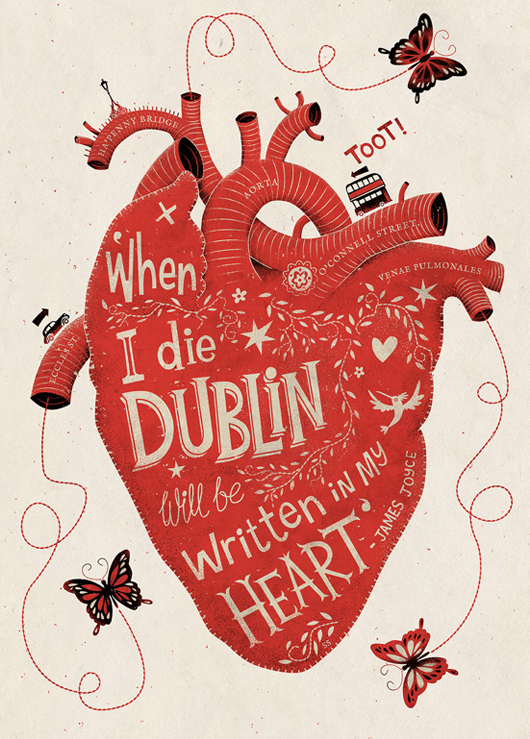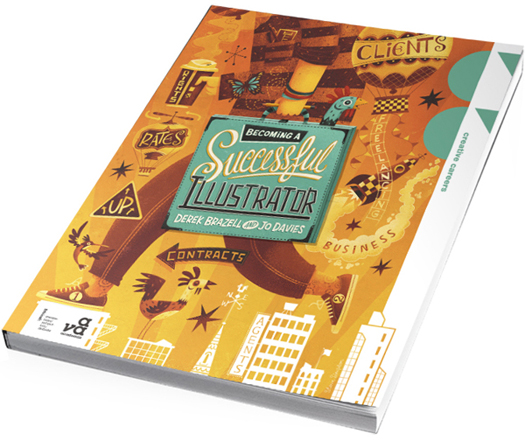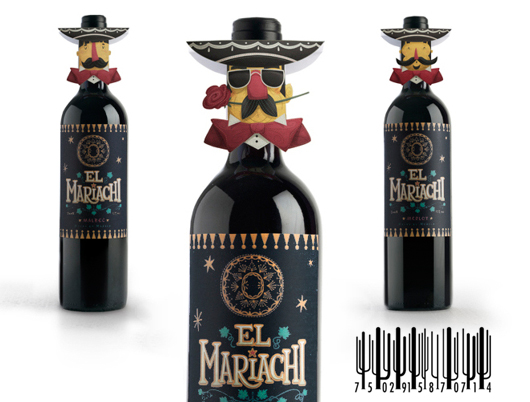Steve Simpson
Steve Simpson – Freelance Illustrator

Poster ‘When I Die’, James Joyce quotation
What was your first break as an illustrator?
At the age of 15 I was given the opportunity to intern for my uncle, John Geering, a cartoonist for The Beano and Dandy (amongst many, many others). I spent the summer of 1981 sitting in his studio drawing rapidograph borders around his penciled panels on the likes of ‘Bananaman’ and ‘Desperate Dan’ and inking simple background elements; fences, building silhouettes, trees and the occasional flying bird. I guess this was the ‘big break’ for me. Not in the sense that from that moment everything became easier, in fact that’s where all the hard work really began. But the experience left me with the belief and determination that if you worked hard enough you could draw for the rest of your life… and that’s all I’ve ever wanted to do. I’m 30 years in the business of drawing and still loving every day.
Having recently completed the cover for ‘Becoming a Successful Illustrator’ by Derek Brazell, Project Manager at the Association of Illustrators and Jo Davies, Associate Professor in Illustration at Plymouth University, UK; what do you feel for you has been the successful route?
Most of the really successful illustrators I know are very determined, hard working and competitive (mostly in a friendly way). They never rest of their achievements and keep pushing to make the next piece better than the last. I think we all do this in different ways. One-way I it is by taking every mistake as an opportunity to lean something new and improve. If we are not making mistakes then we are stationary. Albert Einstein once said ‘The only sure way to avoid making mistakes is to have no new ideas.’
As an illustrator it’s important to produce a body of work that sits together as a cohesive visual style. I’m not great at this; it’s a struggle to keep everything looking like a family, especially as I work so many diverse types of client. Over the years I’ve come up with ways to help me. Firstly I try to restrict my work to as small an area as possible, for me it’s print (I love being able to hold and examine a printed piece, whether that’s a coffee cup, kid’s book or menu cover.). Remember, style is just as much about the way you think / problem solve as it is about the technique you use.

‘Become a Successful Illustrator’ by Derek Brazell and Jo Davies, cover illustration
How has the illustrative landscape of commissioning work changed for you over the past few years?
For the past twenty years I’ve been living in Dublin, when the Irish economy crashed a few years ago the illustration scene changed pretty much overnight. I had been doing a lot of work for the design agencies. All the agencies reduced staff numbers, some closed altogether. The ones that survived need to reduce their costs; they stopped using illustrators/photographers, instead relying on royalty free stock and in-house talent. Luckily this coincided with ad agencies needing a cheaper alternative to photography and for a while there was plenty of ad work. It’s settled down a bit now, however the majority of my work now comes from further afield, Europe, Asia, North and South America, right across the globe.

El Mariachi Wine label design inc. personalised barcode
What importance do you put on your own personal body of work and how does this influence your commissioned work?
I’ve always put great importance on my personal work. I’m feeling guilty, as I haven’t had the time to do much of it lately. I always carry around a couple of sketchbooks. You never know when inspiration can strike and even if you are on a cramped train, it’s worth scribbling a thumbnail down for later reference.
There are quite a few threads running through my work and many of these threads can be traced back to personal pieces I created just for myself. I call the time working on personal stuff, ‘playing’, we’re all big kids really:) and don’t we all want to get paid to do fun stuff!
When you are first commissioned a piece of work, what are the first three steps you take?
1. Read the brief very carefully, then read it again. Fully understand the problem you are being asked to solve.
2. Don’t be afraid to ask questions about anything that isn’t fully clear.
3. Give yourself an hour and make lots of thumbnail sketches before you consider making a bigger sketch (using any template necessary for the job).
Remember to breathe 🙂
.jpg)
Label design for Mic’s Chilli Inferno sauces
You’ve worked on packaging design, book covers and even barcodes! But what would be your ideal commission to complete and why?
I love mixing design and illustration and having lots of control over a design. I’m really enjoying working on packaging projects at the moment. Havn’t done any tea packaging yet, that would definitely be high on the list. A chocolate box and whiskey label would be good too.
What keeps you motivated?
Seeing my friends making great work is always an inspiration and friendly competition is a great motivator. I’m also a huge fan of the Arts & Crafts God Father, William Morris. I love his back to basics approach, the idea of designing the ‘Whole’, how designs can be ‘beautiful and useful’ and his overlying sense of ‘design unity’. Just as the Arts & Crafts movement was a reaction against Victorian industrialisation, I feel that many of its ‘back to traditional craftsmanship’ ideals are much needed in todays over reliance on apps in digital design environments.
Back to News Page
